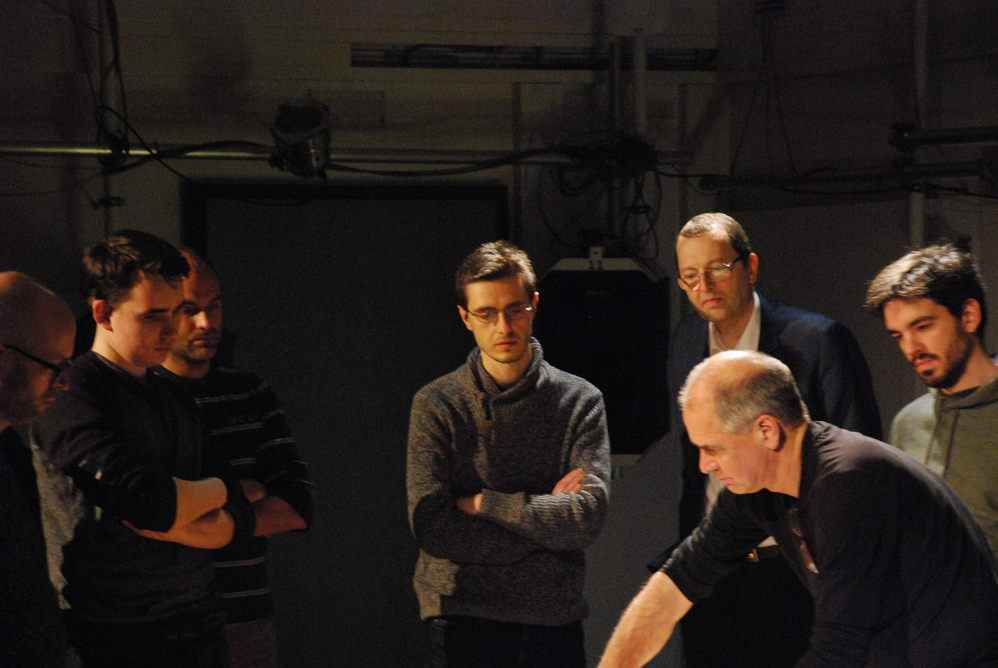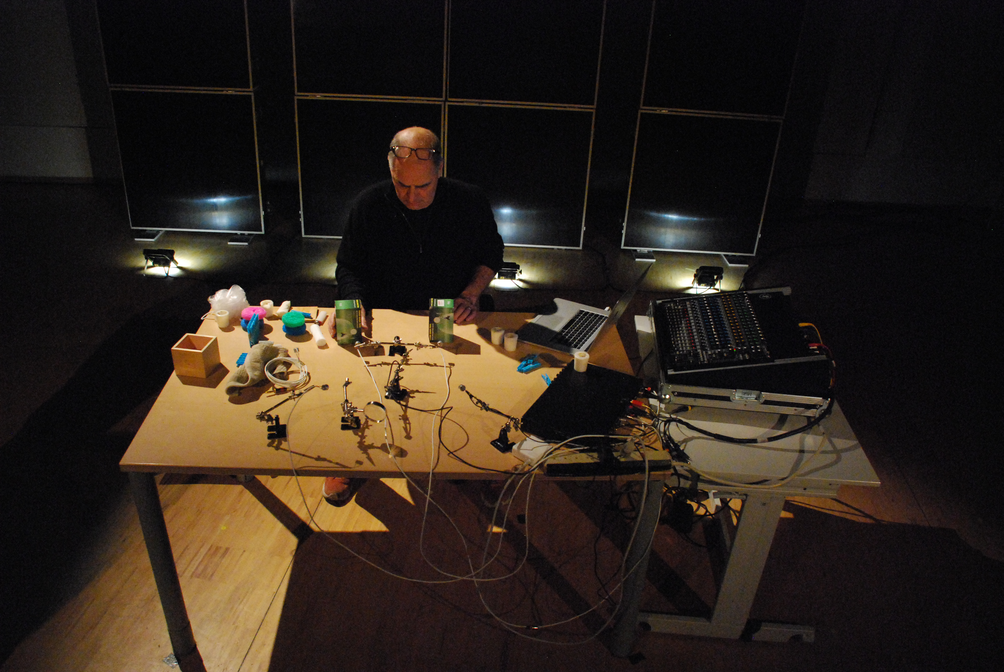The concert took place in the CUBE, the main concert room of the Institute for Electronic Music and Acoustic, Graz, January 26, 2018.
Ron Kuivila presented two new works developed during his ALMAT residency: The Fifth Root Of Two, a sound installation derived from his fascination with the musical procedures of Javanese gamelan, and Listening To The Air, a solo live electronics performance.
{function: contextual}
about the installation
The Fifth Root Of Two
Ron Kuivila, sound installation, 2018
Preceding the performance, the Fifth root of two will be presented as a sound installation. This is another work in progress deriving from my fascination with the musical procedures of Javanese gamelan. Most gamelan instruments are of limited range, so melodic lines extending beyond an octave are never explicitly expressed. Those instruments that have extended range are generally softer, insinuating presences in the overall texture. Instruments playing the basic thread of the music are in unison or at doubled tempo, following specific procedures of elaboration to provide the additional note events. It is as if the octave ambiguity of the Shepard tone has been given full expression in a music of melodic mirage.
The fifth root of two attempts an exploration of this musical space following different rules. In this case a short melodic line of 8 to 12 pitches is generated via Brownian noise. Then every distinct sub-collection of three pitches is taken from the original line. Since pitches are repeated, this yields multiple collections of time points where those three pitches can be found. The three pitches are then played, sequencing through those time points until they are all exhausted and in synchronization with the basic melodic line. Each sub-collection is assigned to its own speaker among the 24 speakers in the CUBE.
{author: RK, artwork: FIfth Root Of Two, origin: program notes}
Listening To The Air
Ron Kuivila, solo live electronics, 2018
While we conceive of sound in terms of pitch, it can be equally well understood in terms of distance. Sounds ranging from 20 to 20,000 cycles per second have wavelengths ranging from 50 feet down to about one half of an inch. Meteorites hitting the earth’s atmosphere can produce wavelengths of a half mile that can travel halfway across the globe. Short wavelengths, on the other hand, are quickly dissipated by the energy it takes to squeeze together and pull apart air molecules. Listening to the Air seeks to expose the shaping influence of air currents on these short sounds in networks of intermodulation and feedback that produce long sounds as a kind of audible shadow.
This solo for live electronics utilizes the particularly directional character of ultrasound to create an open air synthesizer where small household objects focus, scatter, and interconnect different streams of sound. The piece takes the form of a series episodes of varied duration. Each is based on a distinct feedback network with its own equalization, distortion and dynamics processing. Spatialization, tuning, and articulation of the feedback netwrork is done entirely through the manipulation of small objects and the performer's physical presence. As the title suggests, some episodes focus on air currents themselves as a source of modulation while others focus more directly on the motions of the performer or the interaction of multiple streams of sound.
{author: RK, artwork: Listening To The Air, origin: program notes}
Before the concert Ron is rehearsing with his ultrasound synthesizer.

